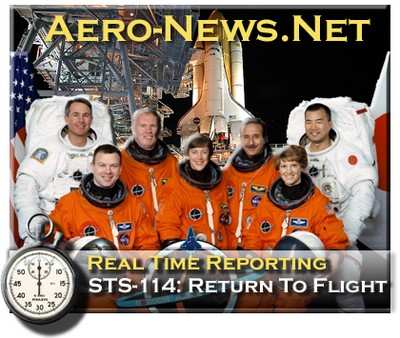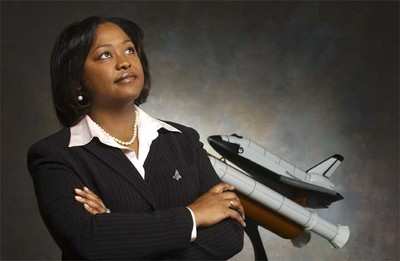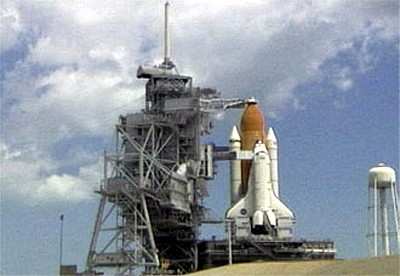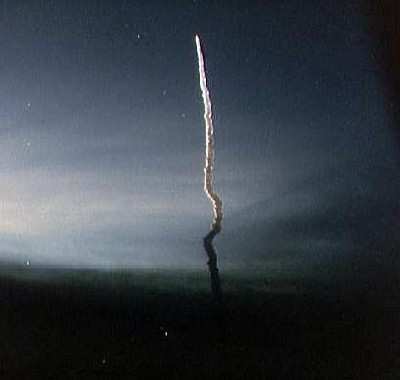Angelia Walker Is A Very Busy Lady These Days
There's rarely a quiet moment in Angelia Walker's office at
NASA's Marshall Space Flight Center in Huntsville, AL. Propulsion
engineers stop by to verify data. Supervisors drop in to check on a
report. Managers at NASA Headquarters in Washington call for
updates.

"Everyone's asking questions, keeping up a constant flow of
information," Walker says. "That's the first sign of a positive
safety culture and a healthy engineering environment."
For Walker, that's a rewarding thing to see. She manages the
Safety, Reliability and Quality Assurance Policy Assessment
Department, one of the primary offices of the Safety and Mission
Assurance Directorate at Marshall.
Walker monitors Center-wide safety policy and adherence to
quality assurance requirements for every Marshall-built system
being developed, tested and prepared for flight. Her organization
partners with program and project offices to ensure every engine
and hardware component and system that leaves Marshall -- bound for
a test stand at NASA's Stennis Space Center near Bay St. Louis, MS,
or a launch pad at NASA's Kennedy Space Center, FL -- is checked
out and ready to safely go to space.
This spring, Walker's chief focus, like so many of her
coworkers, has been STS-114: Space Shuttle Return to Flight. And
she's never been more proud to be part of the NASA team.
"We do an exhaustive amount of checking and rechecking to ensure
we're as safe as we can possibly be," Walker says. "When it comes
to propulsion systems for Shuttle Discovery, we're there. We're
ready. Let's fly."

Those systems are a key responsibility of the Marshall Center.
Engineers in the Space Shuttle Propulsion Office at Marshall,
supported by NASA and industry all over the country, prepare the
Main Engine, External Tank and Solid Rocket Boosters for each
Shuttle flight. At full throttle, each of the three Main Engines,
mounted in the Orbiter's aft fuselage, generates more than 375,000
pounds of thrust -- four times that of the largest commercial jet
engine. The External Tank is the 154-foot-long "backbone" of the
Shuttle, delivering its load of fuel and oxidizer, and absorbing
the 7.3 million pounds of thrust generated during launch. The two,
149-foot-tall Solid Rocket Boosters generate the majority of the
thrust needed to lift the Shuttle from the launch pad, before
separating and dropping into the sea two minutes into the
flight.
Walker's organization partners with project teams and makes
independent assessments to help ensure all Shuttle propulsion
components are ready for launch. And nothing -- not cost
minimization, not schedule, not an ideal launch window -- overrides
safety as the final "go-no go" Shuttle clearance, she says.
Born in Phenix City, AL, Walker was one of seven children of
Jimmie and Lilly Goodwin. Taught early by her parents to stay
focused on school and her career goals, she graduated from Tuskegee
University in Tuskegee, AL, in 1986 with a bachelor's degree in
electrical engineering. She went straight to work as an electrical
engineer supporting design and maintenance of manufacturing
equipment for the Polaroid Film Division in Waltham, Mass. A year
later, she returned home to Alabama. "I won't lie," she laughs. "It
was cold up there!"
Walker also wanted to be closer to her then-fiancé, who
today is her husband, Sam Walker, senior pastor of the Saint Luke
African Methodist Episcopal Church in Birmingham, Ala. She joined
the Marshall Center in 1987 as a quality engineer supporting the
Solid Rocket Booster Project Office. At the time, NASA was
preparing to return to flight following the loss of Shuttle
Challenger, and Walker recalls the determination she saw among her
co-workers.

"It was a good time to learn," she recalls. "I was probably a
little naïve at the time, and it helped me realize you need
tough skin in this business. You can't hesitate when you see an
issue worth bringing to light. Lives depend on us. America's future
in space depends on us.” Today at NASA, she says, that
attitude is universal. "Personnel at every level are quicker to
interact, quicker to challenge traditional procedures in order to
make them better and safer."
That broad devotion to safety makes it easier for Walker to turn
over her duties to others this fall. She was selected in early 2005
to become a NASA Harvard Fellow -- a follow-up to the leadership
program she completed in 2002 at the Federal Executive Institute in
Charlottesville, Va. Nominated annually by NASA supervisors and
selected by a panel of education administrators at NASA
Headquarters, Harvard Fellows spend a semester at the Harvard
Graduate School of Business in Cambridge, MA. Walker will complete
the Harvard Program for Management Development program this fall,
returning to Marshall in early 2006 to continue her service to the
Safety and Mission Assurance Directorate.
"Being selected to attend Harvard is a tremendous opportunity,
and a privilege that greatly humbles me," Walker says. "Leadership
is crucial in every organization. I was taught that you can not
lead where you do not go, so my personal philosophy is to model the
behavior I would like to see."

No shortage of leadership here. And it's a good thing -- her
phone rings again, and there's a fresh knot of chart-carrying
engineers gathering outside her office. Walker's charismatic smile
is back. "Duty calls," she says, and then gets back to work.
 ANN's Daily Aero-Linx (05.06.25)
ANN's Daily Aero-Linx (05.06.25) ANN's Daily Aero-Term (05.06.25): Ultrahigh Frequency (UHF)
ANN's Daily Aero-Term (05.06.25): Ultrahigh Frequency (UHF) ANN FAQ: Q&A 101
ANN FAQ: Q&A 101 Classic Aero-TV: Virtual Reality Painting--PPG Leverages Technology for Training
Classic Aero-TV: Virtual Reality Painting--PPG Leverages Technology for Training Airborne 05.02.25: Joby Crewed Milestone, Diamond Club, Canadian Pilot Insurance
Airborne 05.02.25: Joby Crewed Milestone, Diamond Club, Canadian Pilot Insurance






